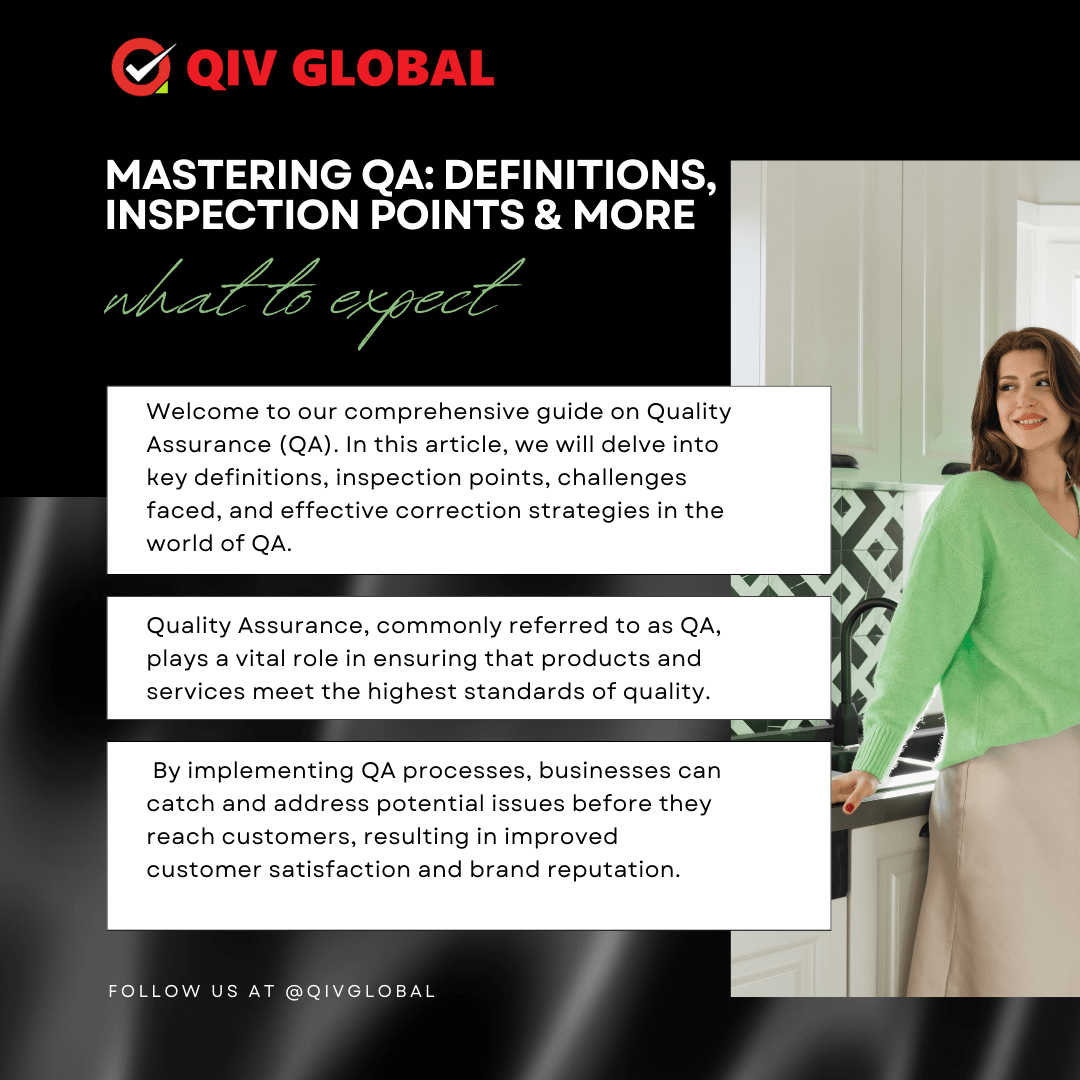Mastering QA: Definitions, Inspection Points & More
Welcome to our comprehensive guide on Quality Assurance (QA). In this article, we will delve into key definitions, inspection points, challenges faced, and effective correction […]
Mastering QA: Definitions, Inspection Points & More Read Post »


